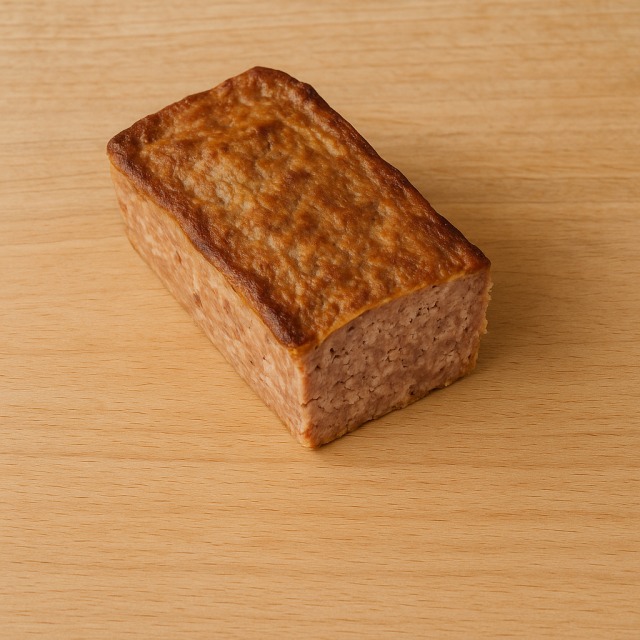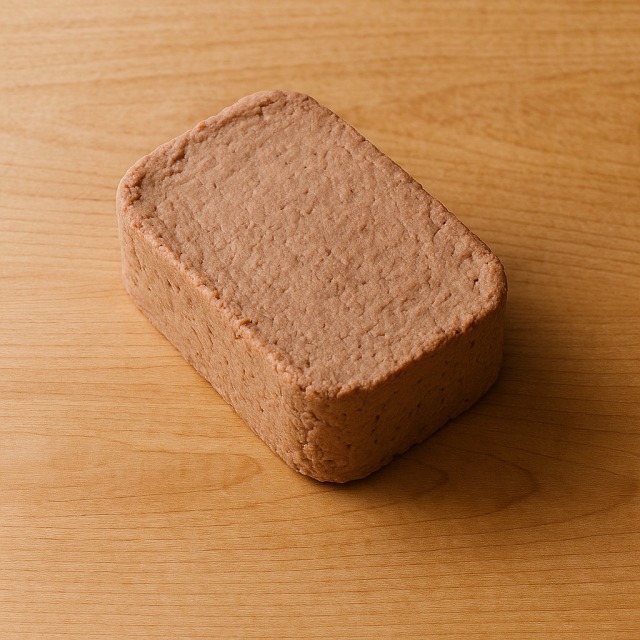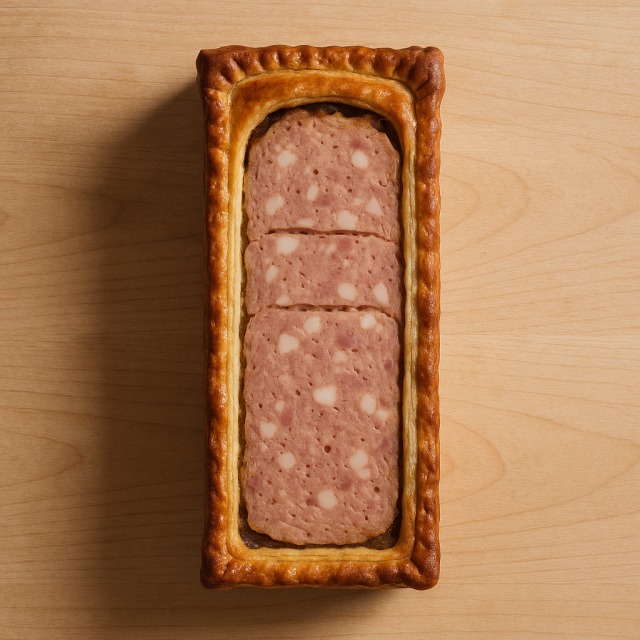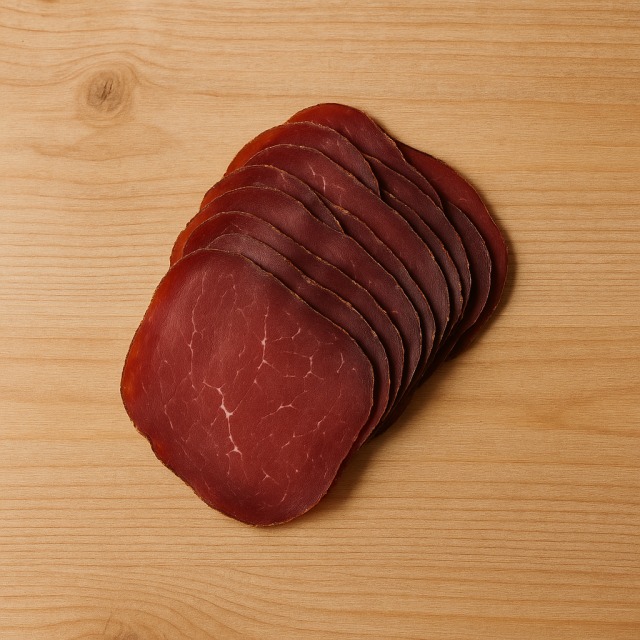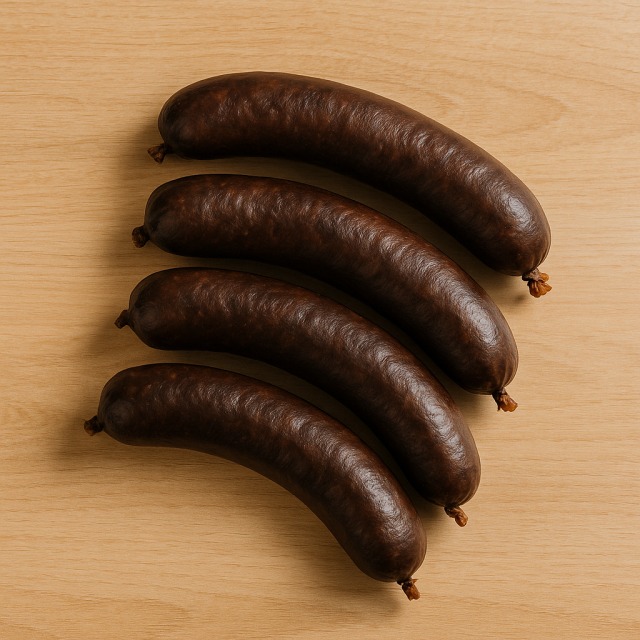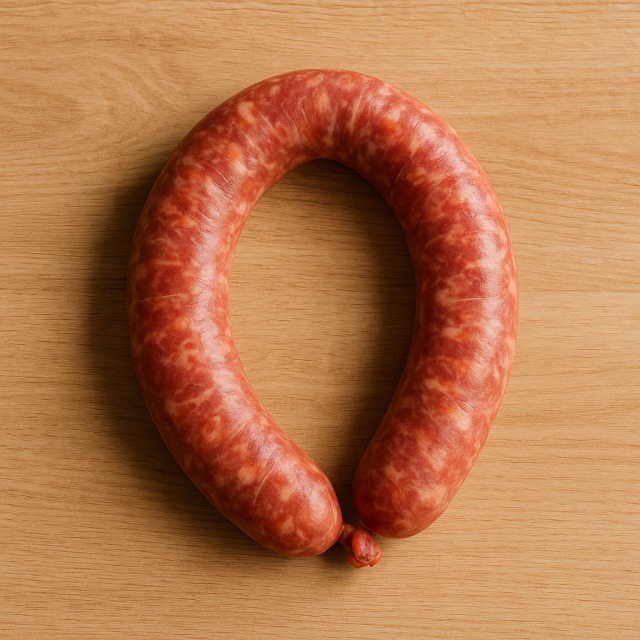Calorie Chart / Meat & Eggs / Rillettes
How Many Calories Are in Rillettes?
Calculation of the nutritional value & Recommended Dietary Intake of rillettes
For g and a calorie requirement of kcal
| Calories 219 kcal | Proteins 7.5 g | Lipids 21 g | Carbohydrates 0.1 g |
| 11% | 10% | 31% | 0% |
Health benefits of rillettes
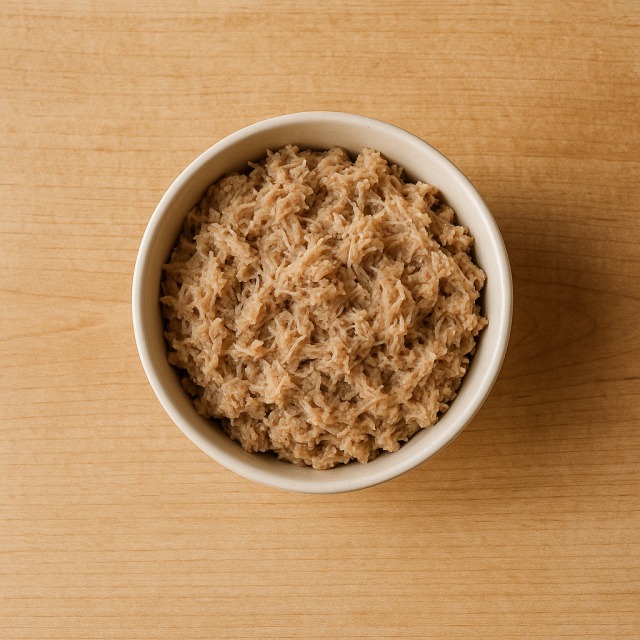
Rillettes - 100g
Calories 438 kcal
Proteins 15 g
Lipids 42 g
Carbohydrates 0.1 g
Rillettes are a traditional French meat spread prepared by slowly confiting pork (sometimes duck or goose) in its own fat. With 438 kcal per 100 g, it is clearly a high-calorie food. The high calories come mainly from lipids (around 42 g/100 g), while the 15 g of proteins offer a moderate anabolic boost for people who need energy-dense snacks.
Beyond calories, rillettes provide several micronutrients: heme iron that supports oxygen transport, zinc for immunity, and selenium with antioxidant properties. Pork rillettes, in particular, deliver B-group vitamins (B1, B3, B6, B12) that participate in energy metabolism—the very pathway that turns these calories into usable fuel. Although sodium is present, potassium levels help maintain electrolyte balance.
The supposed benefit most often cited is satiety: the combination of proteins and fat slows gastric emptying, which may reduce further calorie intake later in the day. For endurance athletes or patients struggling to maintain weight, this dense source of calories can be convenient in small portions. Historically, rillettes were created in Le Mans in the 15th century as a way to preserve cooked meat through winter—proof that high calories were once an asset for survival.
In short, rillettes deliver significant calories, useful micronutrients, and a cultural heritage that turns a simple slice of bread into a gourmet experience.
Tips for incorporating rillettes into a balanced diet
Because rillettes pack many calories, portion control is essential. A thin 20–30 g layer on a slice of wholemeal bread supplies flavor while keeping calories in check. Add raw cucumber sticks or an endive salad dressed with vinaigrette to lighten the plate and increase fiber.
For a balanced lunch, try a baked potato topped with a teaspoon of rillettes and served alongside steamed broccoli. The vegetable volume offsets the calories while the proteins in rillettes complete the amino acid profile. Another idea is a "surf-and-turf" spread: mix a small spoon of rillettes into a bowl of warm lentils; their complex carbohydrates, iron, and fiber temper the calories and fat.
If you crave a sweet-savory contrast, pair rillettes canapés with thin slices of apple. The fruit's pectin helps satiation, and its freshness cuts through the richness, so you naturally reduce overall calories consumed.
Whatever recipe you choose, remember the rule of thumb: let vegetables or legumes cover at least two-thirds of the plate so the calories from rillettes remain an accent, not the main component.
Frequently Asked Questions
- How many calories in rillettes?
- Rillettes provide 438 kcal per 100 g.
- Is a 30 g serving still high in calories?
- Yes. A typical 30 g toast carries about 131 kcal, so those calories add up quickly.
- Are rillettes suitable for a low-calorie diet?
- Because the spread is calorie-dense, it is better reserved for occasional use or measured teaspoons if you are aiming to lower daily calories.
- How do rillettes proteins compare with chicken breast?
- Gram for gram, rillettes contain fewer proteins and far more calories; 100 g of chicken breast offers roughly 110 kcal and twice as much protein with minimal fat.
- What is the best way to balance the calories of rillettes in a meal?
- Add low-calorie sides such as tomato salad or zucchini ribbons. Their volume reduces total calories per plate without sacrificing satisfaction.
- How can I burn off the extra calories from two slices with rillettes?
- Two 30 g slices equal about 260 kcal; brisk walking for 45 minutes or cycling for 30 minutes at moderate intensity will typically expend those calories.
- How long can I keep rillettes once opened?
- Refrigerated at 4 °C and covered with its protective fat layer, rillettes stay safe for about one week; discard if odor, color, or taste changes occur.
Similar foods
Information provided by Calorie Menu may contain inaccuracies or errors. It cannot, under any circumstances, substitute medical advice or medication.
